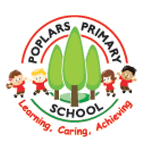Reading - Year 3
Reading Progression – Year 3
|
Reading Outcomes |
Autumn 1 |
Autumn 2 |
Spring 1 |
Spring 2 |
Summer 1 |
Summer 2 |
|
Can use a dictionary to check the meaning of words they have read Can recognise, read and identify the full range of vowel graphemes Can recognise, read and identify the full range of consonant graphemes Can break words into syllables Shows understanding of main points with reference to the text (who, what, where, when, how, why) Can read closely to obtain specific information e.g. what type of clothes someone was wearing Can identify, select and highlight key words in a sentence to answer recall questions |
Can read for enjoyment and chooses to read (can absorb themselves in a book/text) Is beginning to scan for a specific purpose e.g. looking for specific information: names of characters etc Is beginning to skim e.g. to search for adjectives which describe a character Can make plausible predictions based on knowledge of the text (or of books on similar themes or by the same author) Can identify and discuss characters, speculating how they might behave and giving reasons linked to the text Can explain how simple and complex sentences influence meaning. Summative reading assessment |
Can recognise some different forms of poetry (for example, free verse, narrative poetry) Can read books that are structured in different ways and comment on their structures Can discuss the actions of the main characters and justify views using evidence from the text Can comment on the author's choice of language to create mood and build suspense e.g. suddenly is used to show that something surprising is coming next Can comment on the author's choice of language to create mood and build suspense e.g. suddenly is used to show that something surprising is coming next Is beginning to identify main ideas drawn from more than one paragraph |
Can recognise and talk about the main differences between fiction and non-fiction texts Can understand and talk about the purpose of a specific paragraph e.g. it groups information together about… Can summarise the main points from a passage or a text Can explain how they think the author wants the reader to respond Summative reading assessment Is beginning to identify the author’s main purpose for writing. ‘He doesn’t want any more turtles killed.’ Can make inferences about characters actions in a story. |
Can understand and talk about the features of page layout in non-fiction texts e.g. titles, subheadings, labels, diagrams and charts Can empathise with a character's motives and behaviour Can identify the language used to create mood Can discuss word meanings, linking new meanings to those they already know Can explain what the writer might be thinking - 'He thinks they are being mean' Is beginning to identify and comment on different points of view in the text |
Can read 200 words at expected level in 5 minutes Can recognise adjectives, adverbs/simple adverbial phrases and similes Can simply evaluate specific texts with reference to text type e.g. these are good instructions because… Can recognise some features of the text that relate to its historical setting or its social or cultural background e.g. 'The girls had on red flannel petticoats because that is what they wore then' or 'Grandpa Chatterji wears a dohti because he comes from India.' |
|
|
Reading Outcomes |
|
|||||
|
Cyclical Reading Skills |
||||||
|
||||||
